Abstract
The soil fungus Rhizoctonia praticola produced an enzyme that accumulated in the growth medium and caused the polymerization of phenolic and naphtholic intermediates of various pesticides. The dialyzed crude enzyme was purified by ion-exhange column chromatography with diethylaminoethyl-cellulose, followed by gel filtration with Sephadex G-200. The enzyme, a phenol oxidase, was capable of polymerizing 2-chlorophenol, 4-chlorophenol, 2,4-dichlorophenol, and 4-bromo-2-chlorophenol. 1-Naphthol, 2-naphthol, and some of their derivatives formed oligomers or polymers when incubated with the enzyme, but 4-nitrophenol and 2,4-dinitriphenol were not oxidized. Chlorinated and brominated anilines, which are derivatives of herbicides, were not altered by the phenol oxidase from R. praticola, but 4-methoxyaniline was transformed by the enzyme to 2-amino-5-p-anisidinobenzoquinone-di-p-methoxyphenylimine. The formation of polymeric products was determined by mass spectrometric analysis.
Full text
PDF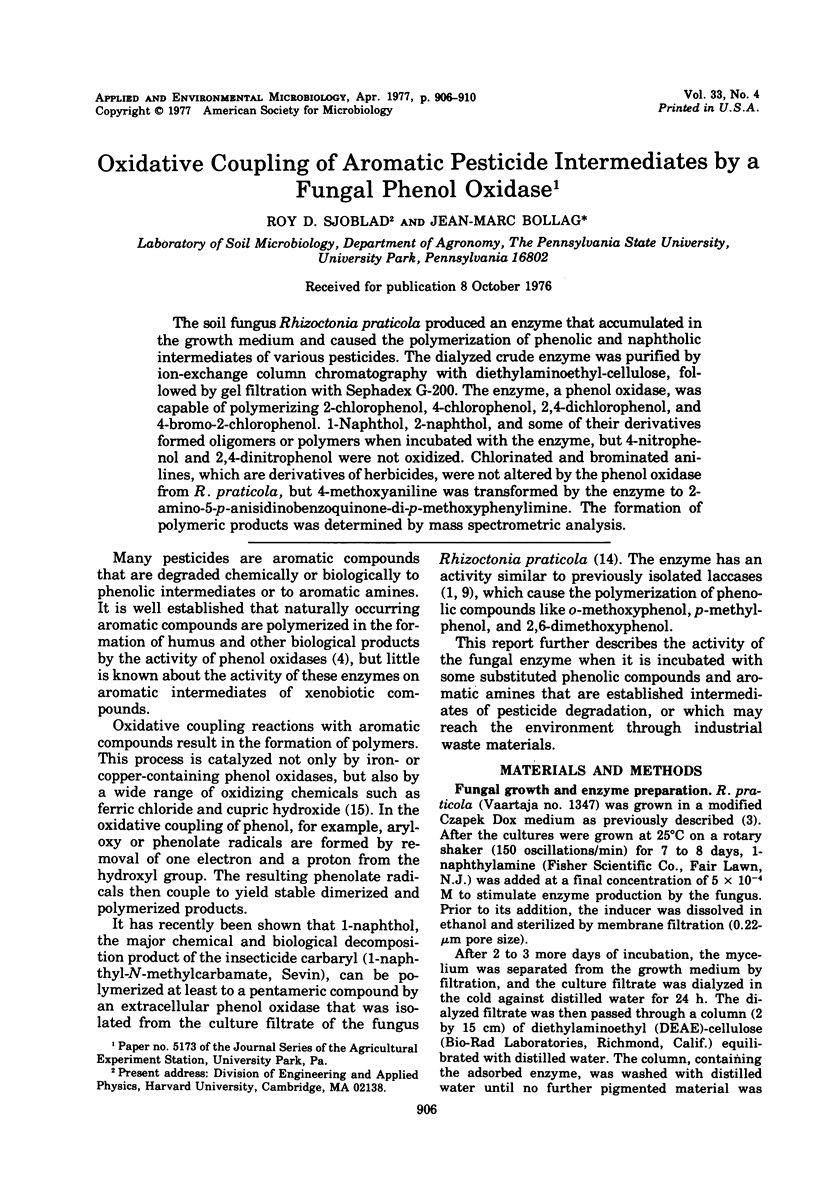
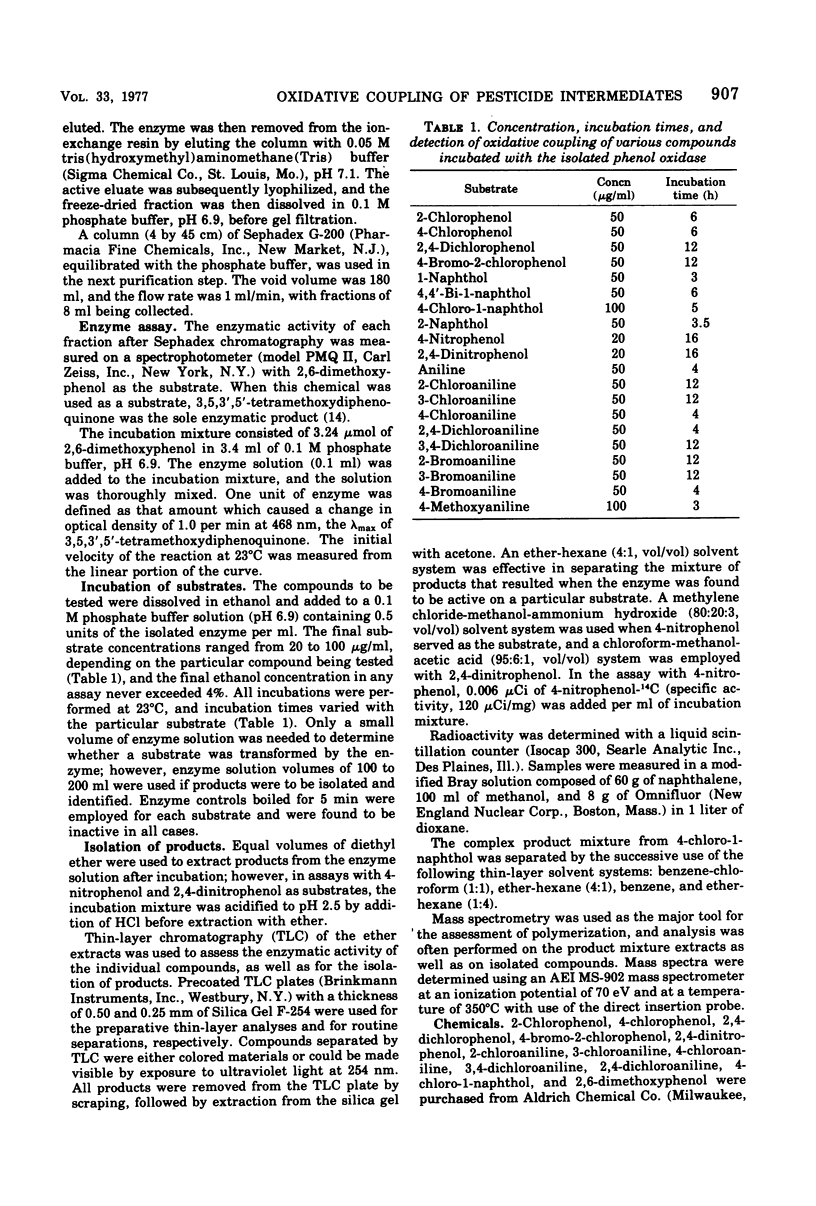
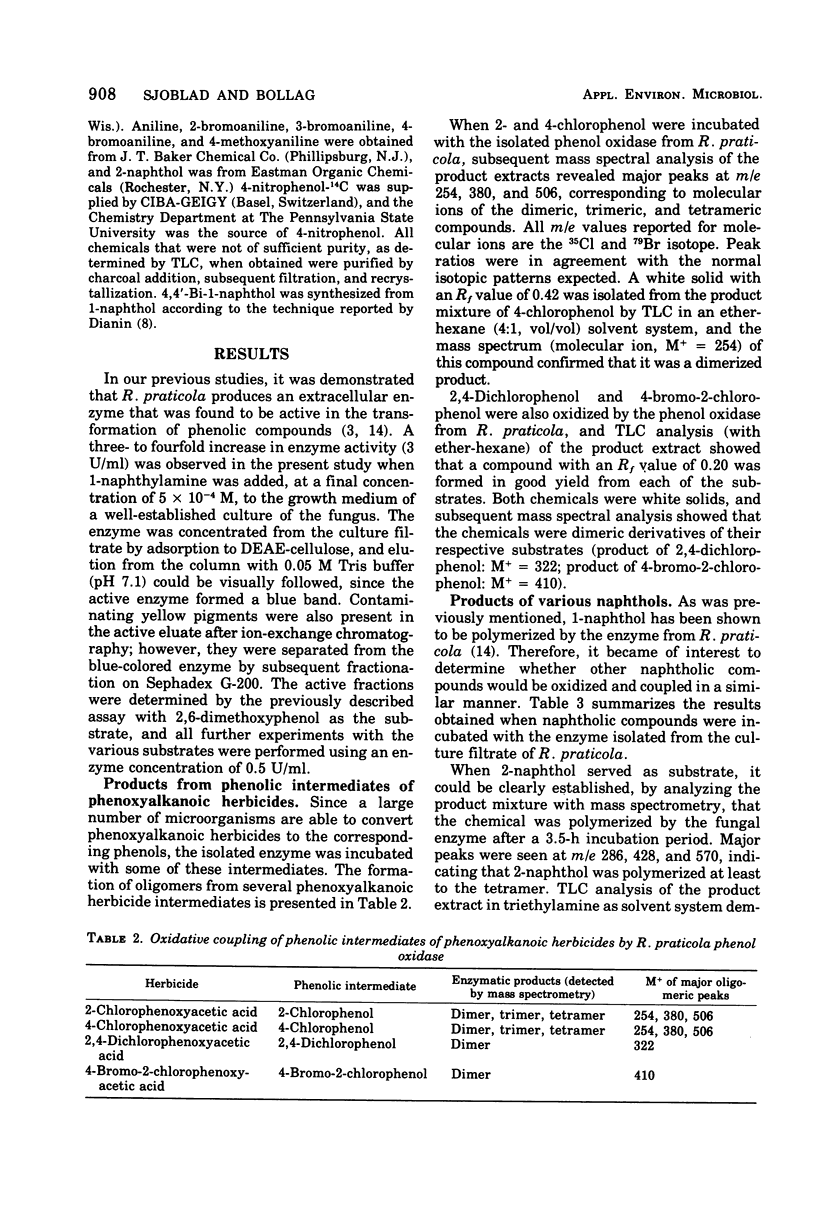
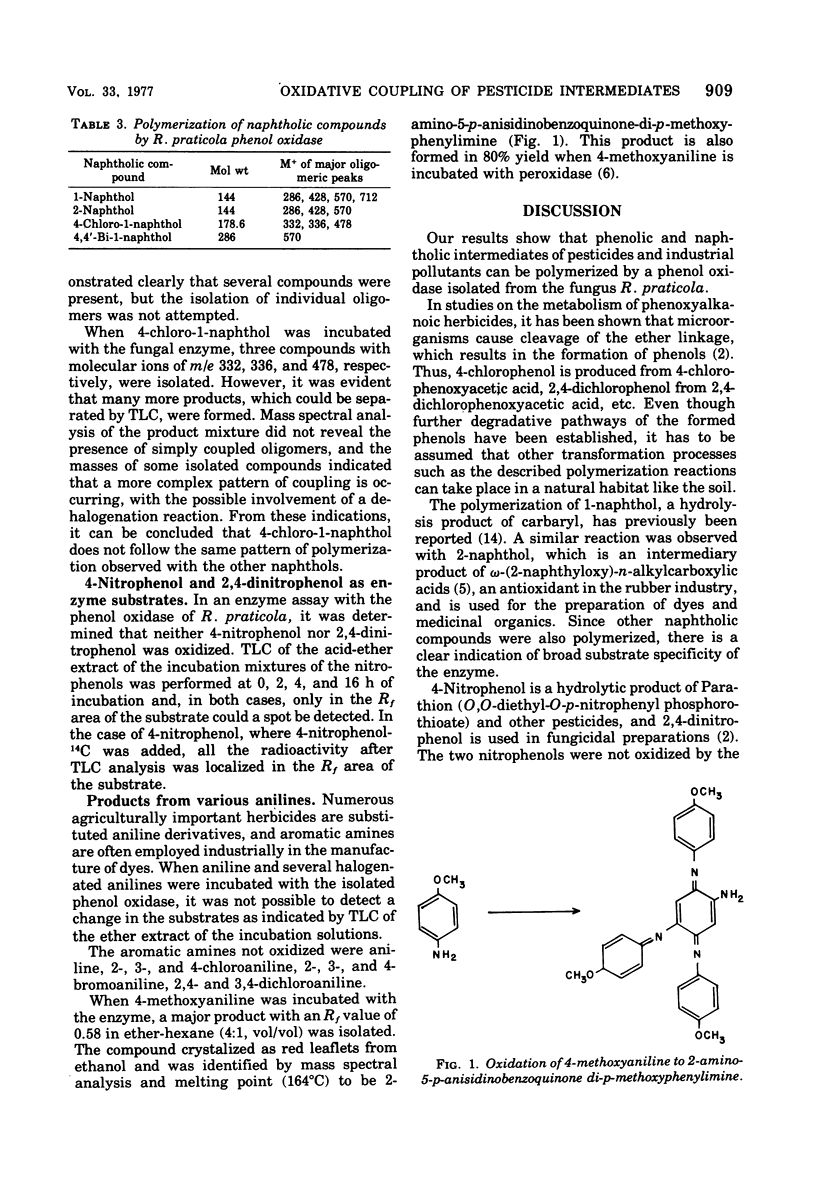
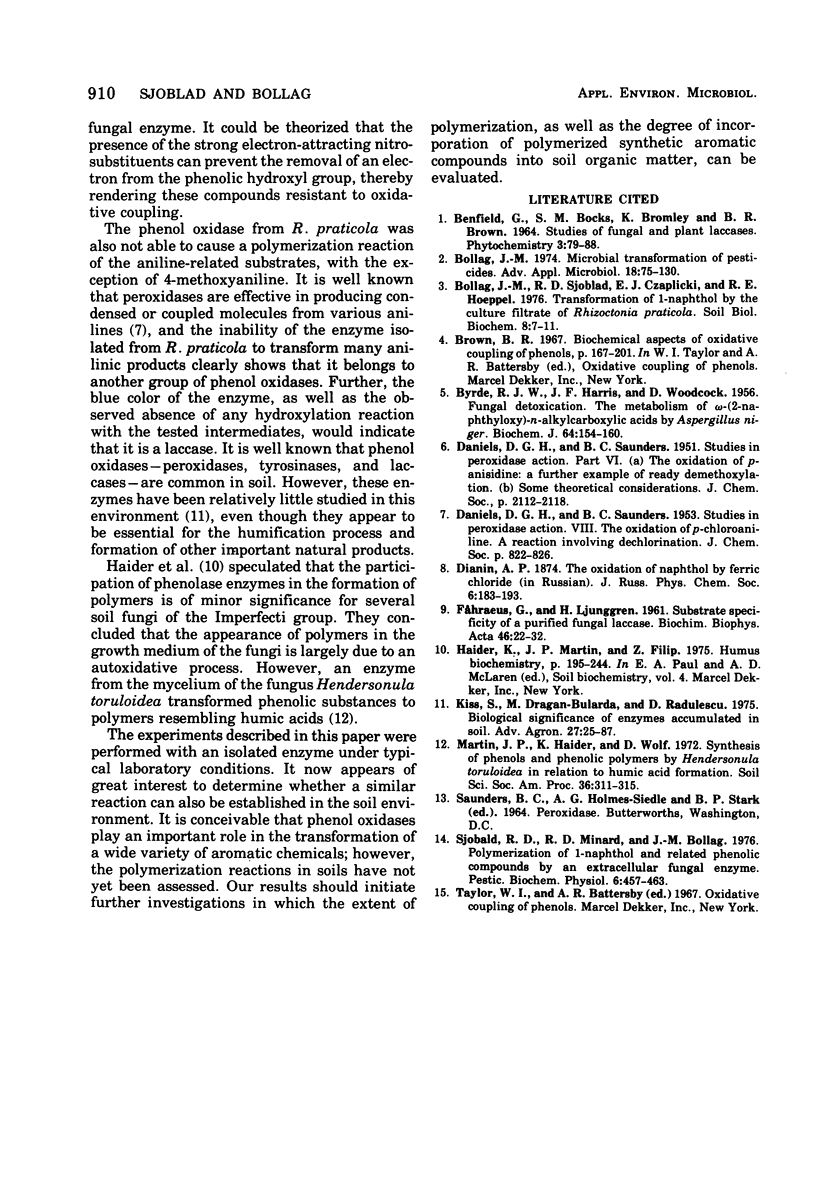
Selected References
These references are in PubMed. This may not be the complete list of references from this article.
- BYRDE R. J., HARRIS J. F., WOODCOCK D. Fungal detoxication, the metabolism of -(2-naphthyloxy)-n-alkylcarboxylic acids by Aspergillus niger. Biochem J. 1956 Sep;64(1):154–160. doi: 10.1042/bj0640154. [DOI] [PMC free article] [PubMed] [Google Scholar]
- Bollag J. M. Microbial transformation of pesticides. Adv Appl Microbiol. 1974;18(0):75–130. doi: 10.1016/s0065-2164(08)70570-7. [DOI] [PubMed] [Google Scholar]
- FAHRAEUS G., LJUNGGREN H. Substrate specificity of a purified fungal laccase. Biochim Biophys Acta. 1961 Jan 1;46:22–32. doi: 10.1016/0006-3002(61)90641-2. [DOI] [PubMed] [Google Scholar]


